Ligament Anatomy
Table of Contents
Introduction
Ligaments are fibrous tissues that connect bones to other bones in the body. They are made up of collagen fibers, ground substances, and cells. Collagen fibers provide strength and flexibility, while the ground substance lubricates and cushions the ligament.
Cells include fibroblasts, myofibroblasts, and endothelial cells. Ligaments can be classified based on their location in the body, including articular, periarticular, capsular, intracapsular, and extracapsular ligaments. Overall, ligaments provide stability to joints and prevent excessive movement.
Structure of ligaments
Ligaments are tough, fibrous structures that connect bones to other bones in the body. They are made up of three main substances: collagen fibers, ground substance, and cells.
Collagen fibers
Collagen fibers are the most abundant component of ligaments and provide strength and flexibility. These fibers are arranged in a parallel fashion, which allows them to resist tensile forces and prevent the ligament from stretching too far. Collagen fibers are also responsible for the elasticity of ligaments, allowing them to return to their original shape after being stretched.
Ground substance
Ground substance is a gel-like substance that surrounds collagen fibers and provides lubrication and cushioning to the ligament. It is composed of water, glycosaminoglycans (GAGs), and proteoglycans. GAGs are long chains of carbohydrates that attract water molecules, which helps to maintain the hydration and lubrication of the ligament. Proteoglycans are proteins that are attached to GAGs and help to maintain the structural integrity of the ligament.
Cells
Cells found in ligaments include fibroblasts, myofibroblasts, and endothelial cells. Fibroblasts are responsible for producing collagen fibers and ground substance, while myofibroblasts are specialized fibroblasts that can contract and generate tension within the ligament. Endothelial cells line the blood vessels that supply the ligament with nutrients and oxygen.
so in the end, the structure of ligaments is designed to provide strength, flexibility, and stability to joints, while also allowing for movement and preventing excessive motion.
Types of ligaments
There are some types of ligaments in the body, each with a specific function and location. Here are some of the most common types of ligaments:
- Articular ligaments: These ligaments are found within joints and connect bones to each other. They are useful to stabilize the joint and prevent extra movement.
- Periarticular ligaments: These ligaments are located near a joint but not within it. They provide additional support to the joint and help to prevent dislocation.
- Capsular ligaments: These ligaments surround a joint and help to maintain its stability. They are composed of dense connective tissue and are responsible for limiting the range of motion of the joint.
- Intracapsular ligaments: These ligaments are located inside the joint capsule and help to stabilize the joint. They are often responsible for preventing excessive rotation or twisting of the joint.
- Extracapsular ligaments: These ligaments are located outside the joint capsule and provide additional stability to the joint. They are often responsible for preventing excessive movement or rotation of the joint.
- Ligamentum flavum: These ligaments are located in the spine and connect adjacent vertebrae. They help to maintain the alignment of the spine and prevent excessive movement.
- An anterior cruciate ligament (ACL): This ligament is located in the knee joint and helps to prevent the tibia from sliding too far forward relative to the femur.
- A posterior cruciate ligament (PCL): This ligament is also located in the knee joint and helps to prevent the tibia from sliding too far backward relative to the femur.
- Medial collateral ligament (MCL): This ligament is located on the inside of the knee joint and helps to prevent excessive inward movement of the knee.
- Lateral collateral ligament (LCL): This ligament is located on the outside of the knee joint and helps to prevent excessive outward movement of the knee.
Ligaments of the shoulder joint
Shoulder ligaments are strong bands of fibrous connective tissue that connect the bones of the shoulder joint. These ligaments provide stability and support to the shoulder joint, which is a ball-and-socket joint that allows for a wide range of movement.
There are four main ligaments in the shoulder joint:

- Glenohumeral ligaments: These ligaments are located on the front, back, and bottom of the shoulder joint. They connect the humerus (upper arm bone) to the glenoid fossa (a shallow depression in the scapula or shoulder blade). The glenohumeral ligaments help to prevent excessive forward, backward, and downward movement of the humerus.
- Coracoclavicular ligament: This ligament joins the clavicle (collarbone) to the coracoid process (a small hook-like structure on the scapula). It provides stability to the acromioclavicular joint (AC joint), which is where the clavicle meets the acromion (the outer edge of the scapula).
- Coracoacromial ligament: This ligament connects the coracoid process to the acromion. It forms a roof over the shoulder joint and helps to prevent upward displacement of the humerus.
- Acromioclavicular ligament: The acromion is joined to the clavicle bone by the acromioclavicular ligament. It provides stability to the AC joint and helps to prevent excessive upward and downward movement of the scapula.
moreover, to these four main ligaments, there are several other smaller ligaments in the shoulder joint that also provide stability and support. These include the superior, middle, and inferior glenohumeral ligaments, the transverse humeral ligament, and the coracohumeral ligament.
so, shoulder ligaments play a crucial role in maintaining the stability and function of the shoulder joint. Injuries to these ligaments can result in pain, weakness, and a limited range of motion in the shoulder. Treatment for shoulder ligament injuries may include rest, physical therapy, and in some cases, surgery.
Ligaments of the elbow joint
The elbow joint is created of three bones: the humerus (upper arm bone), the radius, and the ulna (forearm bones). The stability of the elbow joint is maintained by a network of ligaments that connect these bones.
There are three major ligaments in the elbow joint:
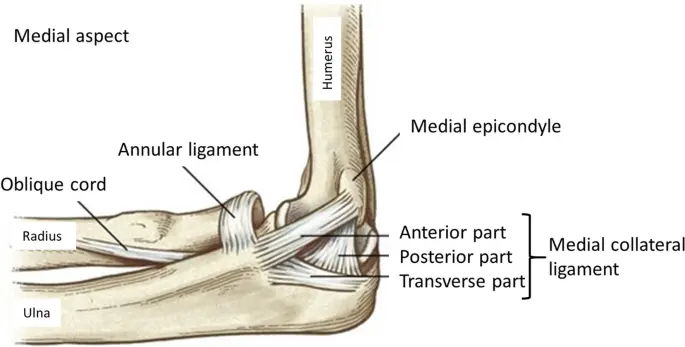
- Ulnar collateral ligament (UCL): This is the most important ligament in the elbow joint. It connects the humerus to the ulna and provides stability to the inner side of the elbow. The UCL is commonly injured in throwing athletes such as baseball players and can result in a condition called “Tommy John” surgery.
- Radial collateral ligament (RCL): This ligament connects the humerus to the radius and provides stability to the outer side of the elbow. It is less commonly injured than the UCL.
- Annular ligament: This ligament wraps around the head of the radius and holds it in place against the ulna. It gives permission for the rotation of the forearm.
In addition to these main ligaments, there are several other smaller ligaments in the elbow joint that provide additional support and stability. These include the lateral ulnar collateral ligament, the accessory collateral ligament, and the anterior and posterior capsule ligaments.
Injuries to the elbow ligaments can result in pain, instability, and limited range of motion in the elbow joint. Treatment for these injuries may include rest, physical therapy, and in some cases, surgery to repair or reconstruct the damaged ligament.
Ligaments of the spine
The spine is made up of a series of bones called vertebrae, which are connected by ligaments. The ligaments of the spine provide stability and support to the vertebral column, allowing for movement and flexibility while also protecting the spinal cord.
There are several types of ligaments in the spine:
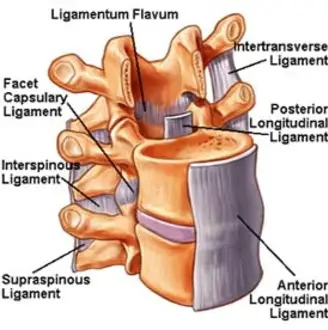
- Anterior longitudinal ligament (ALL): This ligament runs along the front of the vertebral bodies, from the base of the skull to the sacrum. It prevents hyperextension (bending backward) of the spine.
- Posterior longitudinal ligament (PLL): This ligament runs along the back of the vertebral bodies, from the base of the skull to the sacrum. It prevents hyperflexion (bending forwards) of the spine.
- Ligamentum flavum: This ligament connects the laminae (the bony arches that form the back of the vertebrae) and helps to maintain the normal curvature of the spine.
- Interspinous ligament: This ligament works to prevent the spine from flexing forward by joining the spinous processes—the bony projections on the back of each vertebra.
- Supraspinous ligament: This ligament connects the tips of the spinous processes and helps to limit flexion of the spine.
- Intertransverse ligament: This ligament connects the transverse processes (the bony projections on either side of each vertebra) and helps to stabilize the spine during lateral bending.
Injuries to the spinal ligaments can result in pain, instability, and limited range of motion in the spine. Treatment for these injuries may include rest, physical therapy, and in some cases, surgery to repair or reconstruct the damaged ligament. It is important to note that injuries to the spinal ligaments can be serious and should be evaluated by a medical professional.
Ligaments of the hip joint
The hip joint is a ball-and-socket joint that attached the thigh bone (femur) to the pelvis. The hip joint is surrounded by several ligaments that provide stability and support to the joint, allowing for movement and flexibility.
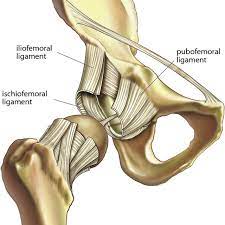
- Iliofemoral ligament: This ligament is the strongest ligament in the body and connects the pelvis to the femur. It helps to prevent hyperextension (bending backward) of the hip joint.
- Pubofemoral ligament: This ligament is attached to the pubic bone to the femur and helps to prevent extra abduction (movement away from the midline of the body) of the hip joint.
- Ischiofemoral ligament: This ligament connects the ischium (part of the pelvis) to the femur and helps to prevent excessive internal rotation of the hip joint.
- Ligamentum teres: This ligament is a small ligament that connects the femoral head (the ball-shaped end of the thigh bone) to the acetabulum (the socket of the pelvis). It helps to stabilize the hip joint and provides a blood supply to the femoral head.
Injuries to the hip ligaments can result in pain, instability, and limited range of motion in the hip joint. Treatment for these injuries may include rest, physical therapy, and in some cases, surgery to repair or reconstruct the damaged ligament. It is important to note that injuries to the hip ligaments can be serious and should be evaluated by a medical professional.
Ligaments of the knee joint
The knee joint is one of the largest and most complex joints in the body, consisting of several ligaments that provide stability and support to the joint. The knee joint is a hinge joint that connects the thigh bone (femur) to the shin bone (tibia) and the kneecap (patella). The ligaments of the knee joint can be divided into two groups: the cruciate ligaments and the collateral ligaments.
Cruciate Ligaments:
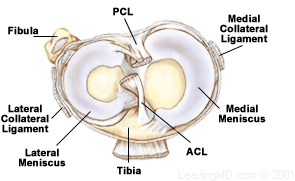
- Anterior Cruciate Ligament (ACL): The ACL is a strong ligament that runs diagonally across the middle of the knee joint, connecting the femur to the tibia. It helps to prevent excessive forward movement of the tibia and rotational movements of the knee joint. Injuries to the ACL are common in athletes and can result in pain, instability, and limited range of motion in the knee joint.
- Posterior Cruciate Ligament (PCL): The PCL is a strong ligament that runs diagonally across the back of the knee joint, connecting the femur to the tibia. It helps to prevent excessive backward movement of the tibia and rotational movements of the knee joint. Injuries to the PCL are less common than injuries to the ACL but can also result in pain, instability, and limited range of motion in the knee joint.
Collateral Ligaments:
- Medial Collateral Ligament (MCL): The MCL is a strong ligament that runs along the inside of the knee joint, connecting the femur to the tibia. It helps to prevent excessive inward movement of the knee joint. Injuries to the MCL are common in contact sports and can result in pain, swelling, and instability in the knee joint.
- Lateral Collateral Ligament (LCL): The LCL is a strong ligament that runs along the outside of the knee joint, connecting the femur to the fibula (a bone in the lower leg). It helps to prevent excessive outward movement of the knee joint. Injuries to the LCL are less common than injuries to the MCL but can also result in pain, swelling, and instability in the knee joint.
Injuries to the knee ligaments can be caused by sudden trauma, such as a sports injury, or by overuse, such as repetitive strain from running or jumping. Treatment for knee ligament injuries may include rest, physical therapy, and in some cases, surgery to repair or reconstruct the damaged ligament. It is important to note that injuries to the knee ligaments can be serious and should be evaluated by a medical professional.
Functions of the ligaments
Ligaments are fibrous connective tissues that connect bones to each other and provide stability to joints. They play a crucial role in maintaining the structure and function of the musculoskeletal system. Here are some of the functions of ligaments in detail:
- Stability: The primary function of ligaments is to provide stability to the joints. They help to hold the bones in place and prevent excessive movement or dislocation. Without ligaments, joints would be unstable and prone to injury.
- Range of motion: While ligaments help to limit the range of motion of joints, they also play a role in facilitating movement. They provide a framework for muscles to work against and allow for controlled movement.
- Shock absorption: Ligaments act as shock absorbers, helping to distribute forces across the joint. This helps to reduce the risk of injury and damage to the bones and other structures within the joint.
- Proprioception: Ligaments contain sensory receptors that provide information about joint position and movement. This information is used by the brain to control muscle activity and maintain balance and coordination.
- Joint lubrication: Some ligaments contain specialized cells that produce synovial fluid, which helps to lubricate the joint and reduce friction between the bones.
- Healing: Ligaments have a limited capacity for healing, but they can repair themselves to some extent after injury. However, severe injuries may require surgical intervention to repair or replace damaged ligaments.
so, ligaments play a very important role in maintaining joint stability, facilitating movement, and preventing injury. It is important to keep them healthy through proper nutrition, exercise, and injury prevention strategies.
Ligaments injuries
Ligament injuries are very common and can range from mild sprains to complete tears. These injuries occur when the ligament is stretched or torn beyond its normal range of motion. The severity of the injury relay on the extent of the damage to the ligament.
Grades of ligament injuries
There are three grades of ligament injuries:
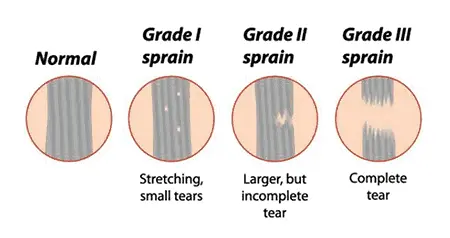
- Grade 1: Mild sprain, in this, the ligament is stretched but not torn out. There may be some pain, swelling, and stiffness in the affected joint.
- Grade 2: Moderate sprain, where the ligament is partially torn out. There may be significant pain, swelling, and bruising in the affected joint. The joint may also feel unstable and difficult to move.
- Grade 3: Severe sprain, where the ligament is fully torn out. There may be a popping sound at the time of injury, followed by intense pain, swelling, and bruising. The joint may be unstable and unable to bear weight.
Ligament injuries can occur due to a sudden twisting or impact on the joint, such as during sports or a fall. They can also occur due to overuse or repetitive stress on the joint.
Treatment for ligament injuries depends on the severity of the injury. Mild sprains may only require rest, ice, compression, and elevation (RICE) therapy, along with pain medication and physical therapy. Moderate to severe sprains may require immobilization with a brace or cast, and in some cases, surgery may be necessary to repair or reconstruct the damaged ligament.
It is important to seek medical attention if you suspect a ligament injury, as early treatment can help prevent further damage and speed up the healing process. With proper treatment and rehabilitation, most people can recover from ligament injuries and return to their normal activities.
Common ligaments injuries
Ligament injuries are common and can occur in any joint in the body. Some of the very common ligament injuries involve:
Ankle sprain: An ankle sprain occurs when the ligaments that connect the bones of the ankle joint are stretched or torn. This injury is common in athletes and can result from a sudden twisting or rolling of the ankle.
Knee ligament injuries:
The anterior cruciate ligament (ACL), posterior cruciate ligament (PCL), medial collateral ligament (MCL), and lateral collateral ligament (LCL) are the four primary ligaments that support the knee joint. Injuries to these ligaments can occur due to sports-related activities or trauma, such as a fall or car accident.
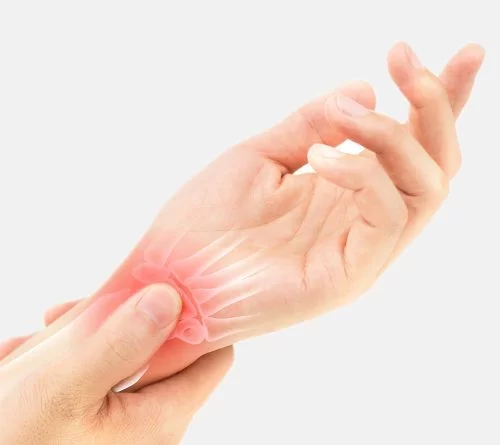
Wrist sprain: A wrist sprain occurs when the ligaments that connect the bones of the wrist joint are stretched or torn. This injury is common in sports that require repetitive wrist movements, such as tennis or gymnastics.
Shoulder dislocation: The shoulder joint has several ligaments that help keep the bones in place. A shoulder dislocation occurs when the upper arm bone is forced out of its socket, often due to a fall or sports-related injury.
Elbow sprain: An elbow sprain happens when the ligaments that are attached to the bones of the elbow joint are stretched or torn. This injury is common in sports that require repetitive throwing motions, such as baseball or softball.
Hip labral tear: The hip joint has a ring of cartilage called the labrum that helps provide stability to the joint. A hip labral tear occurs when this cartilage is torn, often due to sports-related activities or trauma.
Spinal ligament injuries: The spine has several ligaments that help provide stability to the vertebrae. Injuries to these ligaments can occur due to trauma, such as a car accident or fall.
so in the end, ligament injuries are common and can occur in any joint in the body. These injuries can result from sports-related activities, trauma, or repetitive motions. Proper treatment, including physiotherapy, can help individuals recover from a ligament injury and prevent future injuries.
The healing process of ligament
The healing process of ligaments can vary depending on the severity of the injury. In general, the healing process involves three phases: inflammation, repair, and remodeling.
- Inflammation: The first phase of healing is inflammation, which occurs immediately after the injury. During this phase, blood vessels in the injured area dilate, allowing immune cells and other substances to enter the area and begin the healing process. The injured ligament becomes swollen, red, and painful, and the individual may experience a limited range of motion.
- Repair: The second phase of healing is repair, which begins a few days after the injury and can last for several weeks. During this phase, specialized cells called fibroblasts begin to produce new collagen fibers to replace the damaged ones. This process helps to strengthen the injured ligament and restore its function. As the repair phase progresses, the swelling and pain begin to subside, and the individual may be able to move the joint more easily.
- Remodeling: The final phase of healing is remodeling, which can last for several months or even years. During this phase, the newly formed collagen fibers continue to mature and align themselves along the lines of stress, making the ligament stronger and more resilient. The individual may still experience some stiffness or weakness in the joint, but with proper rehabilitation, they can gradually regain their full range of motion and strength.
It is important to note that the healing process of ligaments can be affected by various factors, such as age, overall health, and the severity of the injury. It is essential to seek proper medical care and follow a rehabilitation program to ensure proper healing and prevent future injuries.
Physiotherapy for ligament injuries
Physiotherapy is an essential component of ligament rehabilitation. It involves a range of exercises and therapies designed to restore strength, flexibility, and range of motion to the affected joint. The goal of physiotherapy is to help the injured ligament heal properly and prevent future injuries.
The physiotherapy treatment for ligament rehabilitation may include the following components:
- Initial assessment: The physiotherapist will conduct an initial assessment to evaluate the extent of the injury and determine the appropriate treatment plan.
- Range of motion exercises: The physiotherapist may prescribe exercises to improve the range of motion in the affected joint. These exercises may include stretching and mobility exercises.
- Strengthening exercises: The physiotherapist may prescribe exercises to strengthen the muscles around the affected joint. These exercises may include resistance training and weight-bearing exercises.
- Balance and coordination exercises: The physiotherapist may prescribe exercises to improve balance and coordination, which can help prevent future injuries.
- Manual therapy: The physiotherapist may use hands-on techniques such as massage, mobilization, and manipulation to improve joint mobility and reduce pain.
- Electrical stimulation: The physiotherapist may use electrical stimulation to promote muscle contraction and improve muscle strength.
- Ultrasound therapy: The physiotherapist may use ultrasound therapy to promote healing and reduce inflammation in the affected joint.
- Heat and cold therapy: The physiotherapist may use heat and cold therapy to reduce pain and swelling in the affected joint.
- Patient education: The physiotherapist will educate the patient on proper posture, body mechanics, and techniques for preventing future injuries.
The length of the physiotherapy treatment will depend on the severity of the injury and how quickly the individual heals. It is important to follow the physiotherapy treatment plan as prescribed by a healthcare professional to ensure a full recovery and prevent further injury.
in conclusion, physiotherapy treatment for ligament rehabilitation involves a range of exercises and therapies designed to restore strength, flexibility, and range of motion to the affected joint. Following a proper physiotherapy treatment plan can help individuals recover from a ligament injury and return to their normal activities.
Rehabilitation
Rehabilitation of a ligament injury is a crucial part of the recovery process. It involves a comprehensive program of exercises and therapies designed to restore strength, flexibility, and range of motion to the affected joint. The goal of rehabilitation is to help the injured ligament heal properly and prevent future injuries.
The rehabilitation program will depend on the severity of the injury and the individual’s specific needs. It may include the following components:
- Rest and protection: Initially, the injured joint may need to be immobilized with a brace or cast to allow the ligament to heal. Rest is also important to prevent further damage.
- Ice and compression: Applying ice and compression can help reduce swelling and pain in the affected joint.
- Physical therapy: A physical therapist can design an exercise program that targets the specific needs of the injured joint. This may involve exercises to improvise strength, flexibility, and range of motion.
- Pain management: Pain medication may be necessary to manage pain during the healing process.
- Surgery: In some cases, surgery may be necessary to repair or reconstruct a severely damaged ligament.
The length of the rehabilitation program will depend on the severity of the injury and how quickly the individual heals. It is important to follow the rehabilitation program as prescribed by a healthcare professional to ensure a full recovery and prevent further injury.
In conclusion, rehabilitation of a ligament injury involves a comprehensive program of rest, protection, ice and compression, physical therapy, pain management, and in some cases, surgery. Following a proper rehabilitation program can help individuals recover from a ligament injury and return to their normal activities.
FAQs
Ligaments are tough bands of tissue that connect bones to other bones in a joint, providing stability and support.
While tendons join muscles to bones, ligaments join one bone to another.
Common types of ligament injuries include sprains, strains, and tears.
Symptoms of a ligament injury may involve pain, swelling, stiffness, and difficulty in moving the affected joint.
Ligament injuries are typically diagnosed through a physical exam, imaging tests such as X-rays or MRI scans, and sometimes arthroscopy (a minimally invasive surgical procedure).
Minor ligament injuries may heal on their own with rest and physical therapy, but more severe injuries may require surgery or other medical interventions.
To prevent ligament injuries, it is important to maintain good overall physical fitness, warm up properly before exercise or sports activities, wear appropriate protective gear, and use proper techniques when performing physical activities.

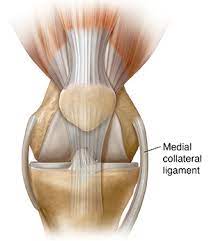

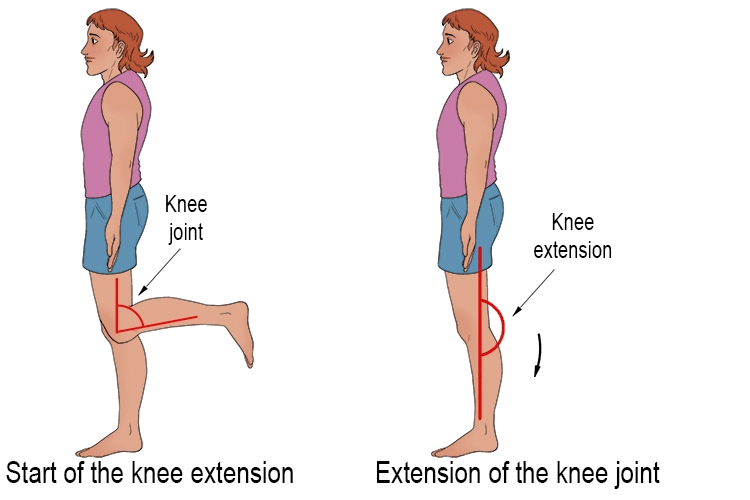
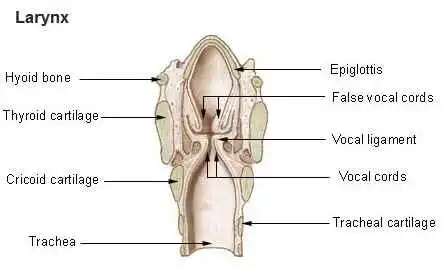
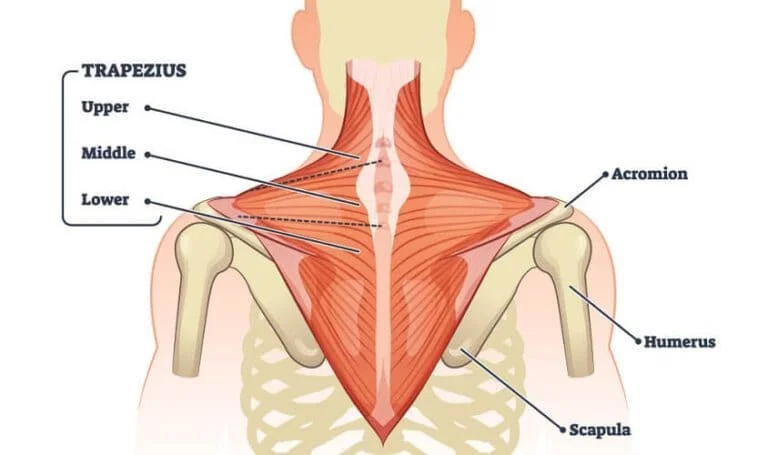
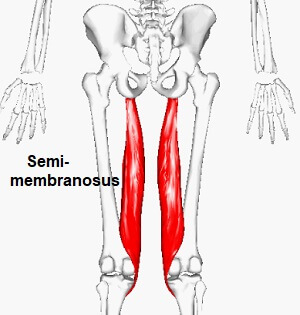
One Comment